
How to Brush Your Cat’s Teeth: Top 10 Step-by-Step Tips And Tricks
- February 21, 2025
Table of Contents
Brushing your cat’s teeth might not be something most pet owners immediately think about when it comes to their feline’s well-being. However, like humans, cats need regular dental care to stay healthy. Over time, plaque and tartar build-up can lead to bad breath, gum disease, and even more severe conditions such as tooth loss or infections. Brushing your cat’s teeth is one of the easiest and most effective ways to maintain oral health, and with a bit of patience, you can make it a routine part of your pet care.
In this guide, we’ll walk you through 10 simple steps that will help you brush your cat’s teeth successfully. From choosing the right tools to making the process as stress-free as possible for your cat, these tips will set you up for success in maintaining your cat’s dental hygiene.
Why You Should Brush Your Cat’s Teeth?
You may wonder why brushing your cat’s teeth is so important. After all, they don’t consume sugary foods or beverages like we do. Despite this, plaque still builds up on their teeth, and without proper care, it can lead to several health issues.
Here’s why brushing your cat’s teeth is crucial:
- Prevention of Dental Disease: Cats are prone to developing periodontal disease, which can cause gum inflammation, tooth loss, and infections. Brushing helps to prevent this by removing plaque and tartar build-up.
- Bad Breath: Regular brushing can help reduce halitosis or bad breath, which is often a sign of an underlying dental issue.
- Health Benefits: Dental disease has been linked to heart, liver, and kidney problems. Keeping your cat’s teeth clean helps prevent these complications.
- Cost-Effective: Taking care of your cat’s teeth can help avoid expensive dental treatments at the vet, such as tooth extractions or surgeries.
Without regular brushing, your cat could face a lifetime of dental issues. So, it’s a small task that offers big rewards in the long run!
Step One: Find the Right Time
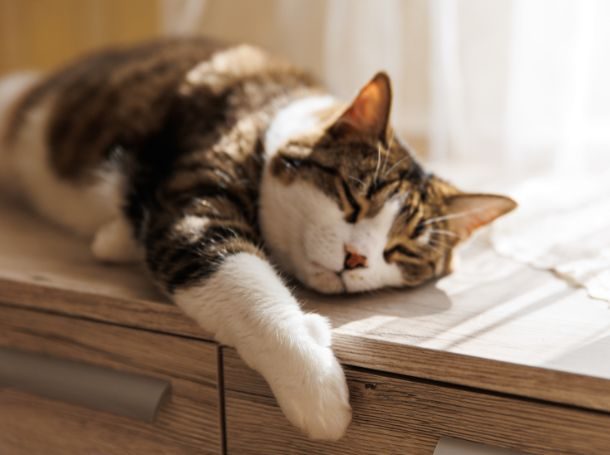
One of the first things you’ll want to consider is the timing. Cats are sensitive creatures, and their moods can vary greatly throughout the day. You’ll want to pick a time when your cat is relaxed and calm.
Here’s how to determine the best time:
- After Playtime: After a fun and tiring play session, your cat will likely be more relaxed and less likely to fight back during brushing.
- When They Are Sleepy: Cats are more mellow when sleepy, especially in the early morning or late evening.
- Avoid Stressful Times: It’s best to avoid brushing right after feeding or during stressful situations, such as a vet trip or a busy household.
- Watch for Body Language: If your cat shows signs of anxiety (like dilated pupils or hiding), it’s better to wait for a calmer period.
The key is to find a time when your cat feels at ease so the brushing process goes as smoothly as possible.
Step Two: Gather Your Tools

Before you start, it’s essential to have the right tools on hand. Like brushing your teeth, you’ll need a few items to make the process effective and safe for your cat.
Here’s a list of what you’ll need:
- Cat Toothbrush: There are specially designed toothbrushes for cats, often featuring a smaller head and softer bristles. Some toothbrushes even come with dual sides for more convenience.
- Cat Toothpaste: Always use toothpaste specifically designed for cats. Regular human toothpaste contains fluoride, which is harmful to cats if ingested. Look for flavors your cat likes, such as chicken or tuna, to make the experience more pleasant.
- A Towel or Blanket: Depending on your cat’s temperament, you may need something to wrap them in gently, keeping them calm and still.
- A Treat: Don’t forget to reward your cat with a treat after the session. This will help create a positive association with the brushing process.
Having the right tools is the first step to ensuring brushing goes smoothly and safely.
Step Three: Assume the Position
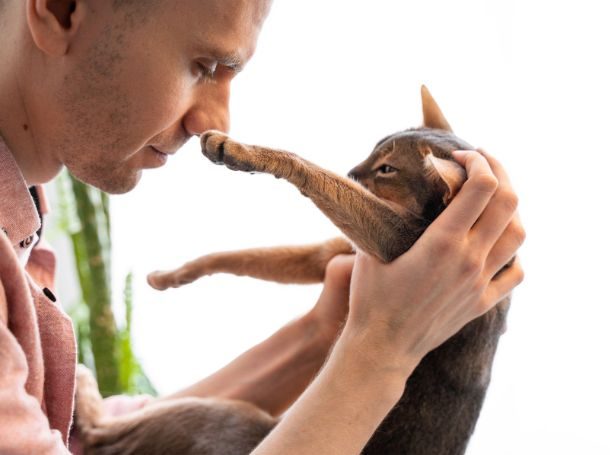
Positioning yourself and your cat correctly will make the brushing experience less stressful for both parties. For many cats, the experience can be intimidating at first. Finding a comfortable position is key.
Here’s how to do it:
- Hold Your Cat Securely: Gently but firmly hold your cat in your lap or on a surface that’s not too high, like a table. You don’t want them to feel like they can jump away.
- Sit or Stand Close to Your Cat: Make sure you’re within easy reach of their face but not so close that you make them feel cornered. You want them to feel safe, not trapped.
- Use a Soft Grip: You may need to gently hold your cat’s head steady with one hand while using the toothbrush with the other. The goal is to keep your cat calm and prevent them from squirming too much.
Your position ensures the brushing will be effective, and your cat will feel supported and secure.
Step Four: Get Their Gums Ready
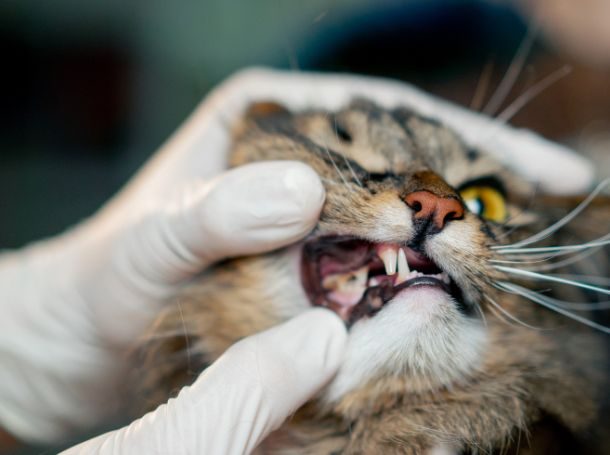
Before brushing, it’s important to warm your cat’s gums up a little. Cats, especially those who are new to brushing, might be sensitive to having their gums touched. Starting slowly and gently will help prepare your cat for the sensation.
Here’s how to do it:
- Massage the Gums: Gently rub your cat’s gums with your finger or even a soft cloth so that they can get used to the sensation. This helps them become familiar with the feeling of something near their teeth.
- Be Gentle: Be very gentle during this process. If you notice any signs of discomfort, slow down or stop and try again later.
- Consistency is Key: The more you practice this step, the more your cat will get accustomed to having their mouth handled.
Step Five: Test the Toothpaste
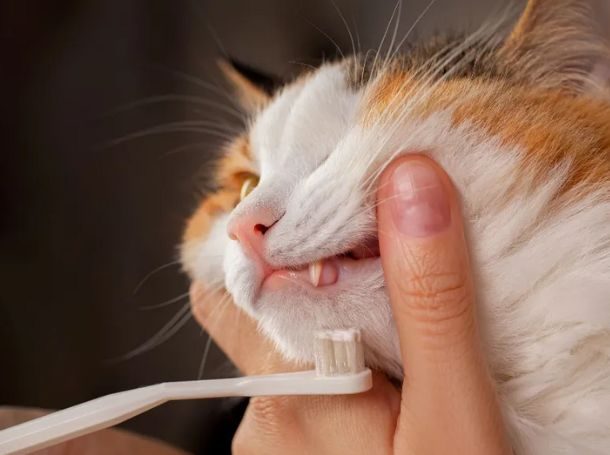
Now that you’ve prepared your cat for the brushing experience, it’s time to introduce the toothpaste. Cats are very particular about what they put in their mouths, so the toothpaste you choose can make a huge difference.
Here’s how to test the toothpaste:
- Start with a Small Amount: Put a tiny amount of the cat-specific toothpaste or the toothbrush on your finger. Before you begin brushing, you want to let your cat get used to the texture and taste.
- Let Your Cat Smell It: Gently bring the toothpaste towards your cat and let them sniff it. If they seem curious or show positive signs, that’s a good sign they might not mind it.
- Taste Test: If your cat likes the taste of the toothpaste, they might lick it off your finger, which is a great start. It can also help your cat associate the paste with a positive experience.
The key to success here is ensuring the toothpaste is specifically made for cats. Avoid using human toothpaste at all costs as it can be toxic to them, especially if swallowed. The flavor and texture will also appeal to your cat, helping the brushing session smoothly.
Step Six: Try the Toothbrush
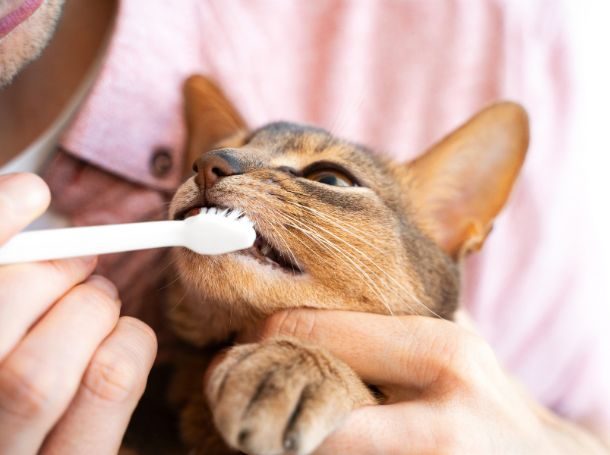
Once your cat has adjusted to the toothpaste, it’s time to introduce the toothbrush. Cats’ teeth are small, so using a toothbrush designed for their unique oral structure is crucial. Using the right tool ensures you can brush your teeth effectively without causing any discomfort.
Here’s how to use the toothbrush:
- Start Slowly: Gently approach your cat’s mouth with the toothbrush, keeping them calm. First, touch the brush lightly on their lips or teeth to get them used to the feeling.
- Use Gentle Movements: Don’t rush. Use a soft hand to begin with light strokes around their teeth and gums. Start at the back of the mouth and work your way forward. Cats’ molars are more challenging to reach, so spend extra time on these areas.
- Be Patient: Some cats will immediately accept the toothbrush, while others may take a little more time to get used to it. Go slow and take breaks if your cat seems stressed.
The first few times you use the toothbrush might feel awkward but don’t get discouraged. With enough patience and practice, it will become a natural routine for you and your cat.
Step Seven: Use a Circular Motion
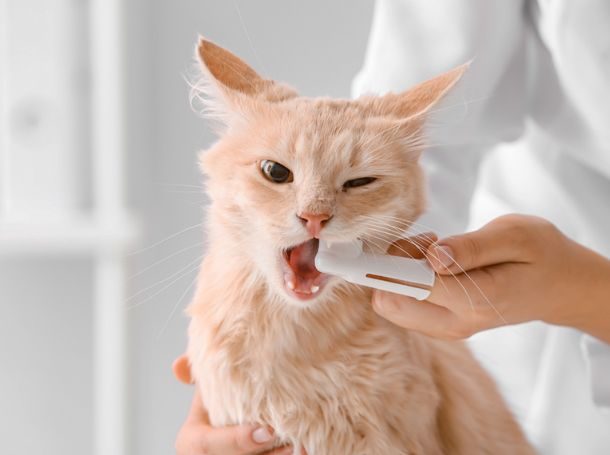
When brushing your cat’s teeth, the technique matters as much as the tools you use. Brushing in the proper motion ensures that plaque and tartar are effectively removed and helps to stimulate healthy gums.
Here’s how to do it:
- Small Circular Motions: When brushing your cat’s teeth, use small, gentle circular motions rather than brushing back and forth. The circular motion helps break down the plaque more effectively and covers more surface area on the tooth.
- Be Gentle on the Gums: Be careful around your cat’s gums. The goal is not to scrub aggressively but to gently massage the teeth and gums with the brush.
- Please focus on the Back Teeth: The back teeth are often more prone to plaque build-up because they are more challenging for your cat to clean on their own. Ensure you spend extra time on these areas, especially near the molars.
Using a circular motion removes plaque and is less likely to irritate your cat’s gums. This technique will keep the experience more comfortable for them.
Step Eight: Focus on the Plaque
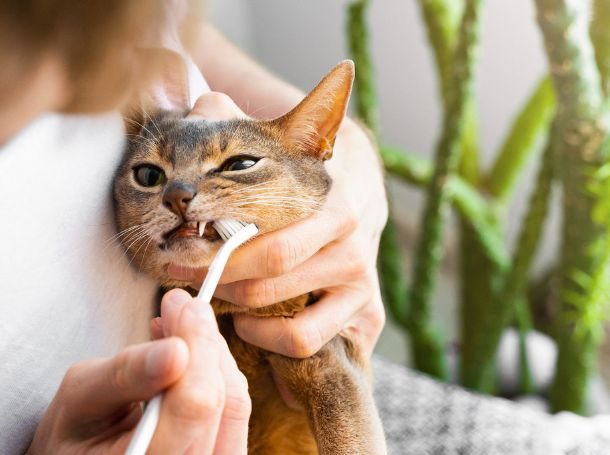
Plaque is the primary culprit in cat dental disease. If left untreated, it can harden into tartar, which can only be removed by a vet. So, focusing on plaque removal is critical when brushing your cat’s teeth.
Here’s how to focus on the plaque:
- Target Problem Areas: Plaque accumulates around the gum line, especially near the back teeth. Focus your brushing efforts here.
- Look for Signs of Buildup: As you brush, look for yellow or brown spots, which indicate plaque or tartar buildup. These areas require extra attention and care.
- Use Extra Time on Plaque: If your cat allows, spend a little more time brushing over areas with visible plaque. Try gently massaging those spots with the brush to break it down more effectively.
It’s important not to get frustrated if your cat has visible plaque. Regular brushing gradually decreases plaque, and your cat’s teeth will stay cleaner longer. Just be patient and focus on making brushing as effective as possible.
Step Nine: Be Reassuring
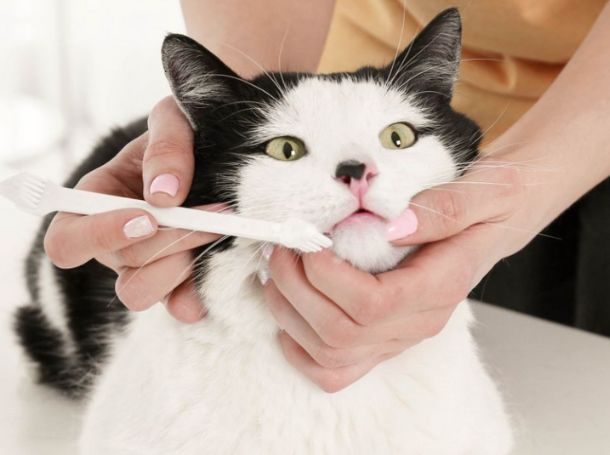
It’s normal for your cat to feel a little apprehensive during its first few brushing sessions. Remaining reassuring and calm is vital to ensuring that your cat doesn’t get stressed out and that the process remains a positive experience.
Here’s how to reassure your cat:
- Calm Voice: Use a soft and quiet voice to reassure your cat throughout the brushing process. Speaking gently helps keep them relaxed.
- Take Breaks if Needed: If your cat becomes too stressed, take a short break. You can even give them a small treat to break up the session.
- Gentle Petting: After brushing, gently pet your cat and praise them. Let them know that they did well and that this is a good experience. Cats respond positively to praise, which helps them feel more comfortable the next time they brush their teeth.
The key is not to rush. A slow, reassuring approach makes the experience much more pleasant for your cat and builds trust over time.
Step Ten: End on a Positive Note
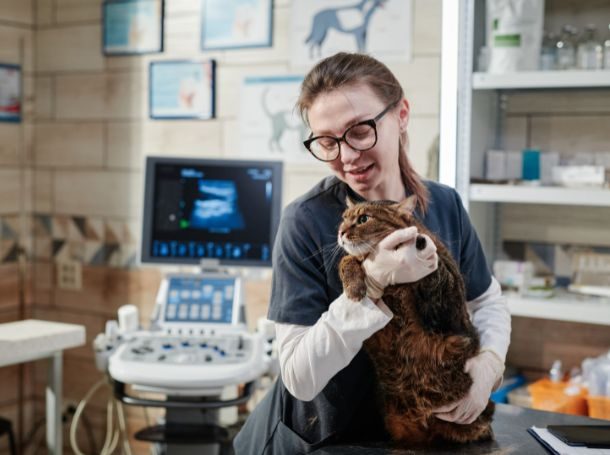
How you finish the brushing session is just as important as how you start. Ending on a positive note helps your cat associate tooth brushing with something enjoyable, making future sessions easier.
Here’s how to end the session positively:
- Give Praise and Treats: After brushing, immediately reward your cat with a tasty treat or some extra playtime. Positive reinforcement helps your cat associate the brushing experience with something good.
- Give Them Space: Don’t overwhelm your cat right after brushing. Let them have a moment to themselves to process the experience and relax.
- Be Consistent: The more you end each session positively, the more your cat will begin to enjoy tooth brushing as part of their routine.
Building up a positive association with brushing will make the whole process smoother for you and your cat.
Conclusion
Brushing your cat’s teeth might seem daunting at first, but it will become a simple and rewarding part of its routine with patience and consistency. The 10 steps outlined here will guide you through the process, helping you maintain your cat’s oral health and prevent more serious dental problems in the future.
By taking the time to care for your cat’s teeth, you ensure they enjoy fresh breath and healthy gums and contribute to their overall health and longevity. So don’t wait—start brushing your cat’s teeth today, and make it a habit they’ll eventually look forward to!
FAQs
1. How often should I brush my cat’s teeth?
Ideally, you should brush your cat’s teeth at least 2-3 times a week. However, if you can manage to do it every day, that’s even better! The more consistently you brush, the better the chances of preventing dental issues like plaque buildup and gum disease.
2. What happens if I don’t brush my cat’s teeth?
Neglecting to brush your cat’s teeth can lead to dental diseases such as gingivitis, periodontal disease, and tooth decay. It may also cause bad breath and discomfort for your cat. Over time, plaque and tartar can build up, leading to infections or even tooth loss, which can result in costly veterinary treatments.
3. Can I use human toothpaste for my cat?
No, never use human toothpaste for cats. Human toothpaste contains fluoride and other ingredients that are toxic to cats if swallowed. Always opt for toothpaste specially designed for cats, which is safe for them to ingest.
4. My cat doesn’t like having their teeth brushed. What can I do?
If your cat is resistant to brushing, start by gradually getting them used to the idea. Try gently massaging their gums or letting them taste the toothpaste. Always make the experience as positive as possible by offering praise and treats. If needed, start with short sessions and slowly increase the brushing time as your cat becomes more comfortable.
5. Can I use a fingerbrush instead of a toothbrush for my cat?
Yes, finger brushes can be a great alternative to traditional cat toothbrushes, especially for cats who are sensitive or anxious. Finger brushes are typically smaller and softer, making them less intimidating for your cat. However, it’s essential to ensure that the finger brush can still effectively clean the teeth and gums.




Leave a comment